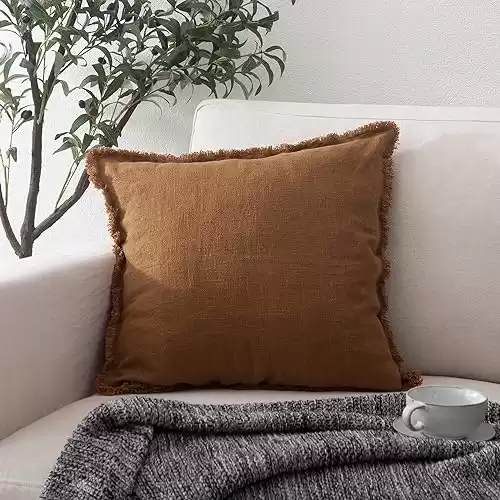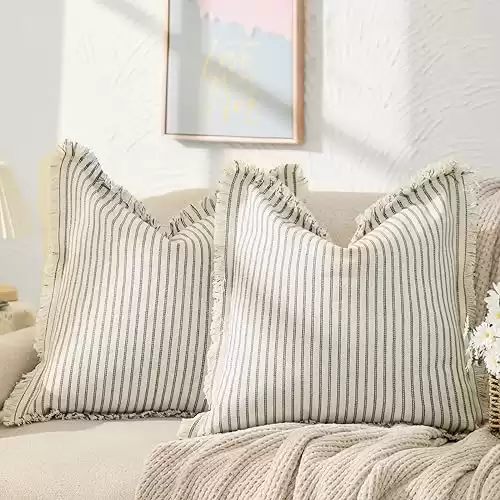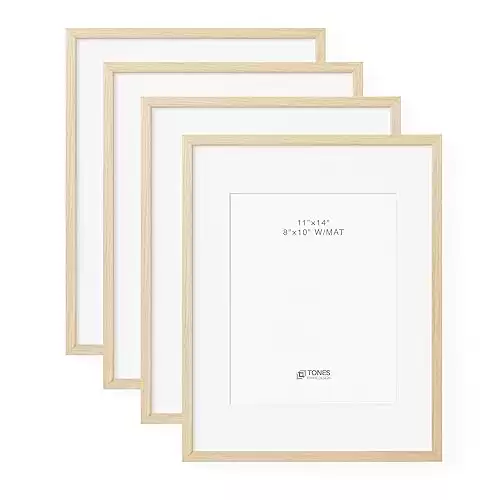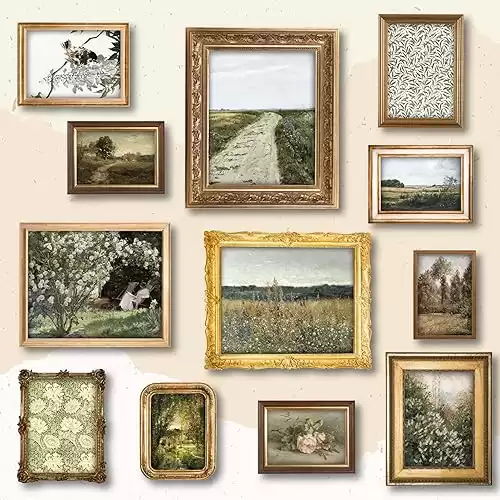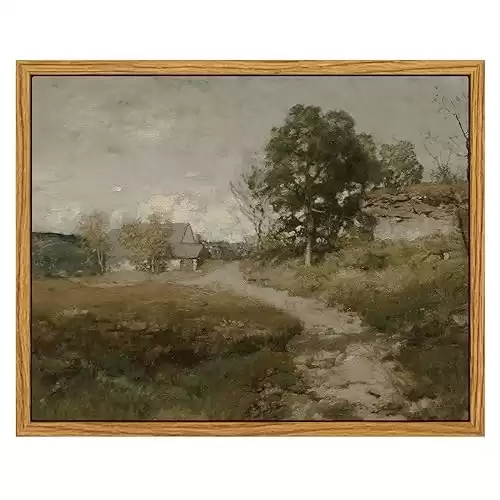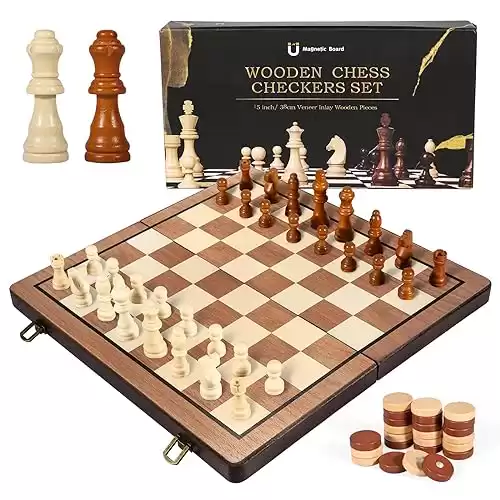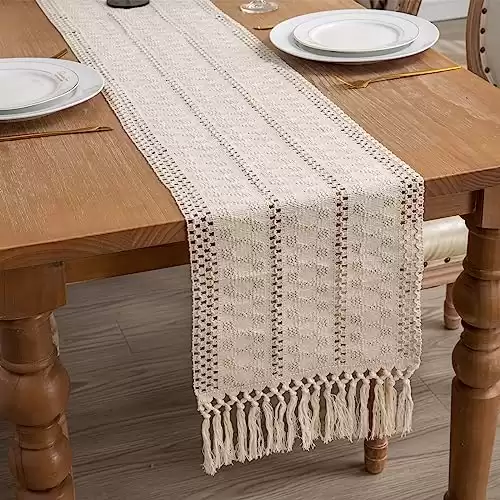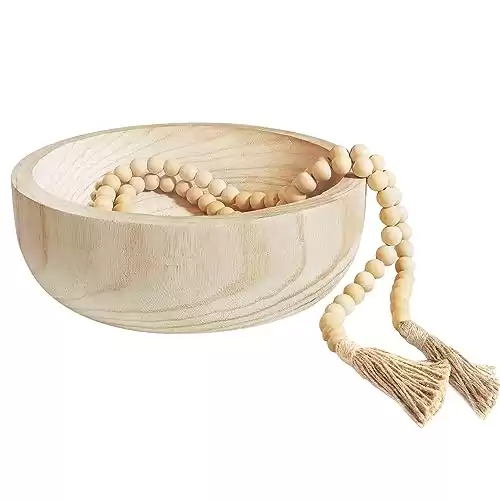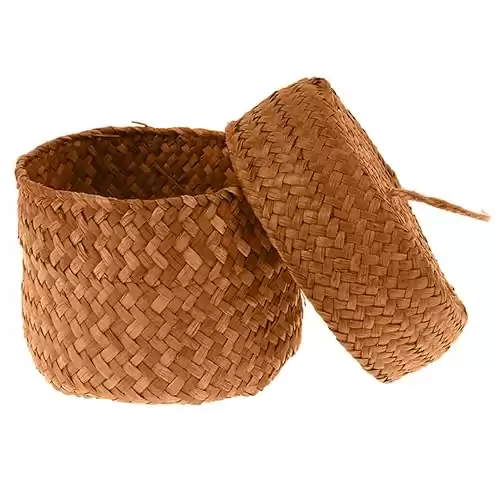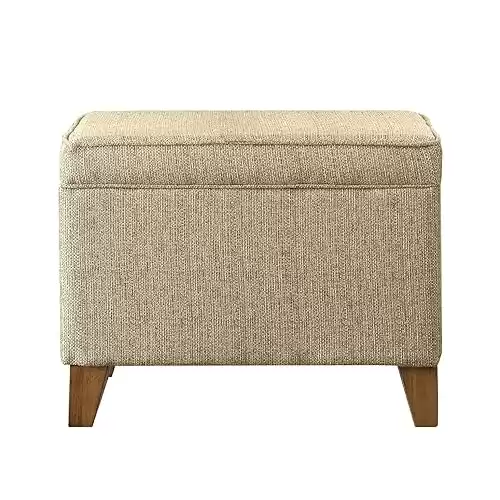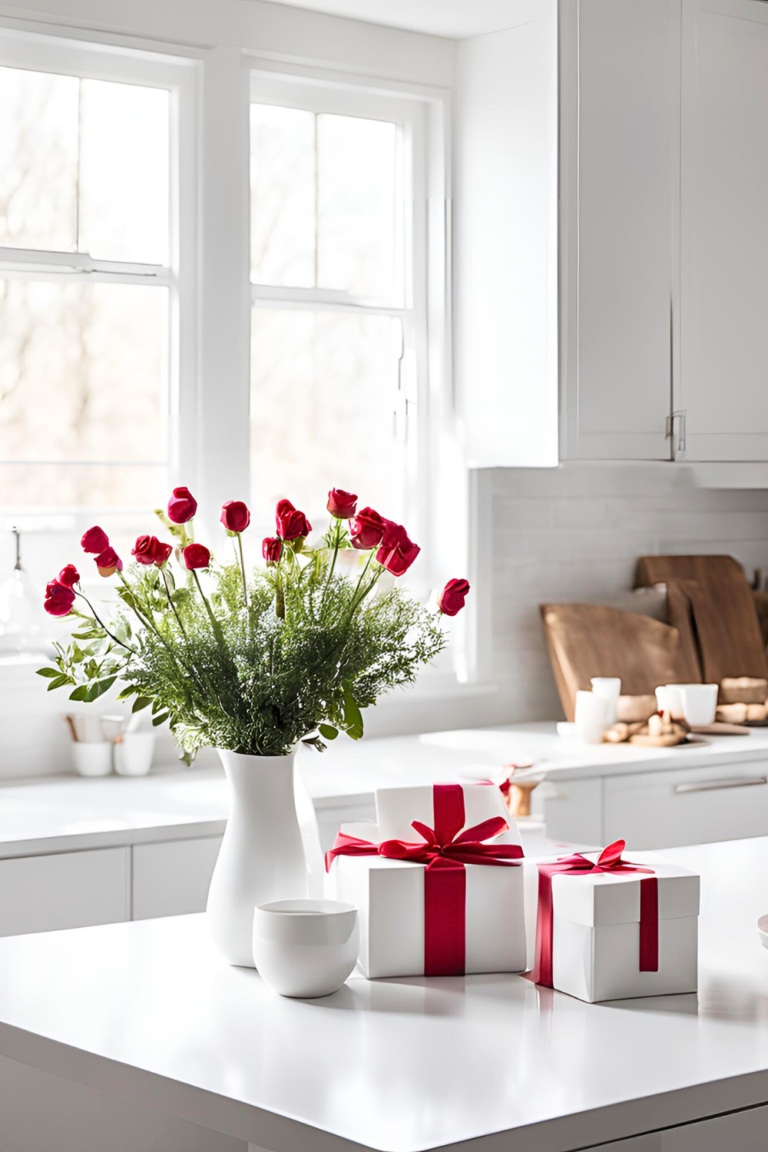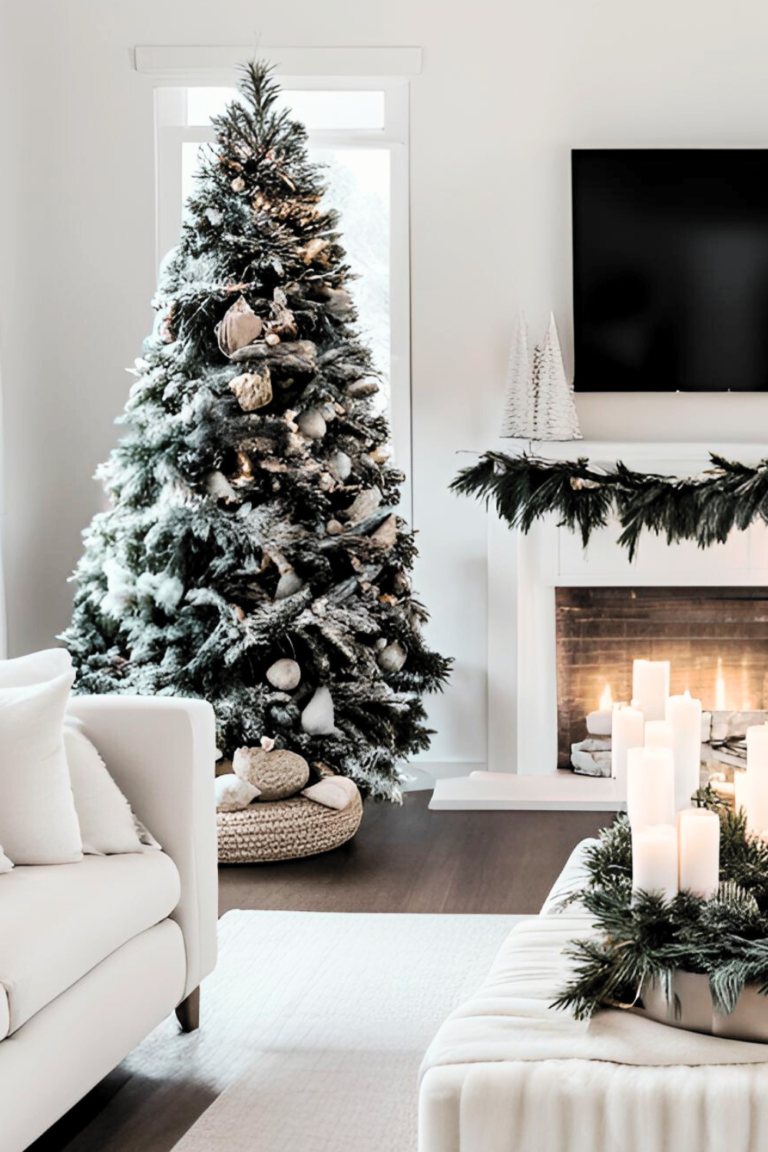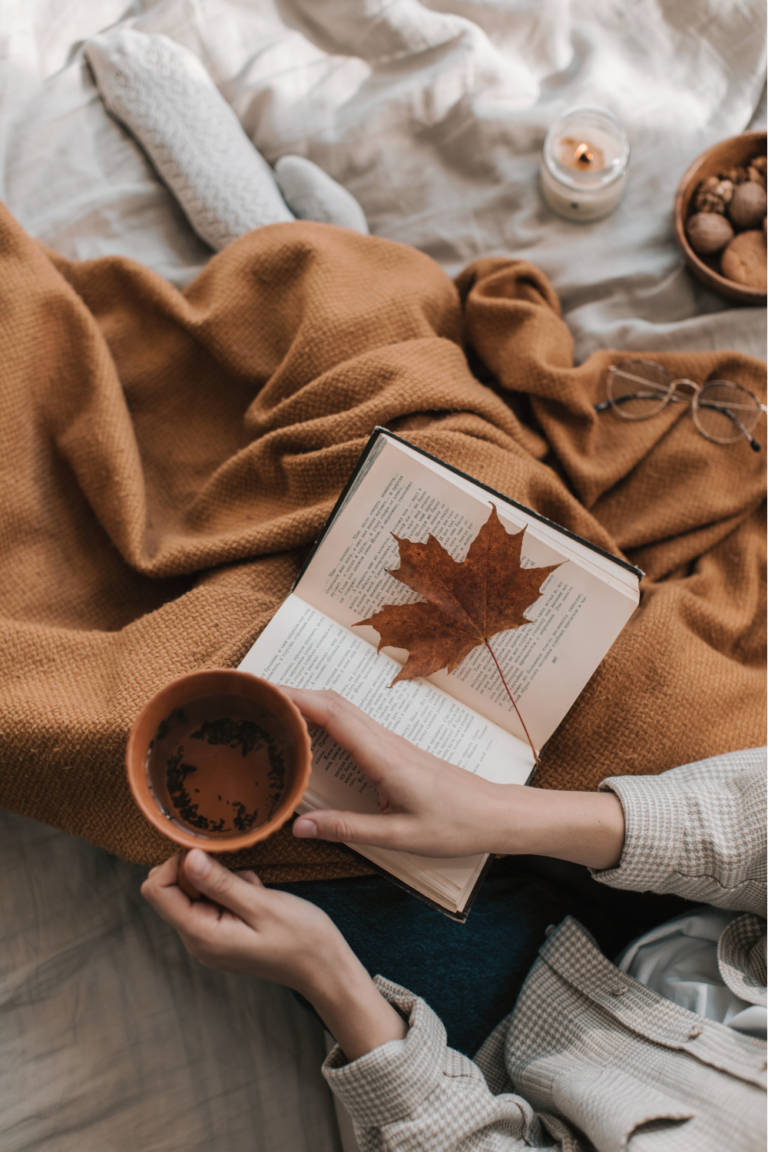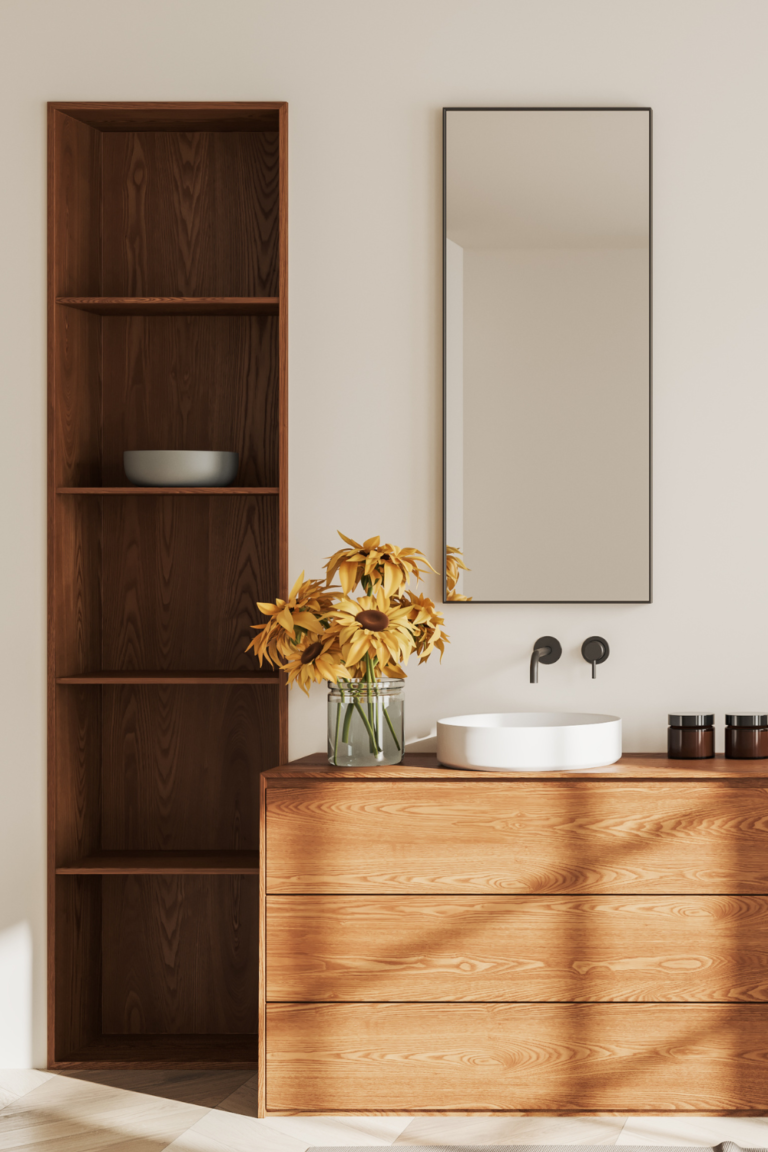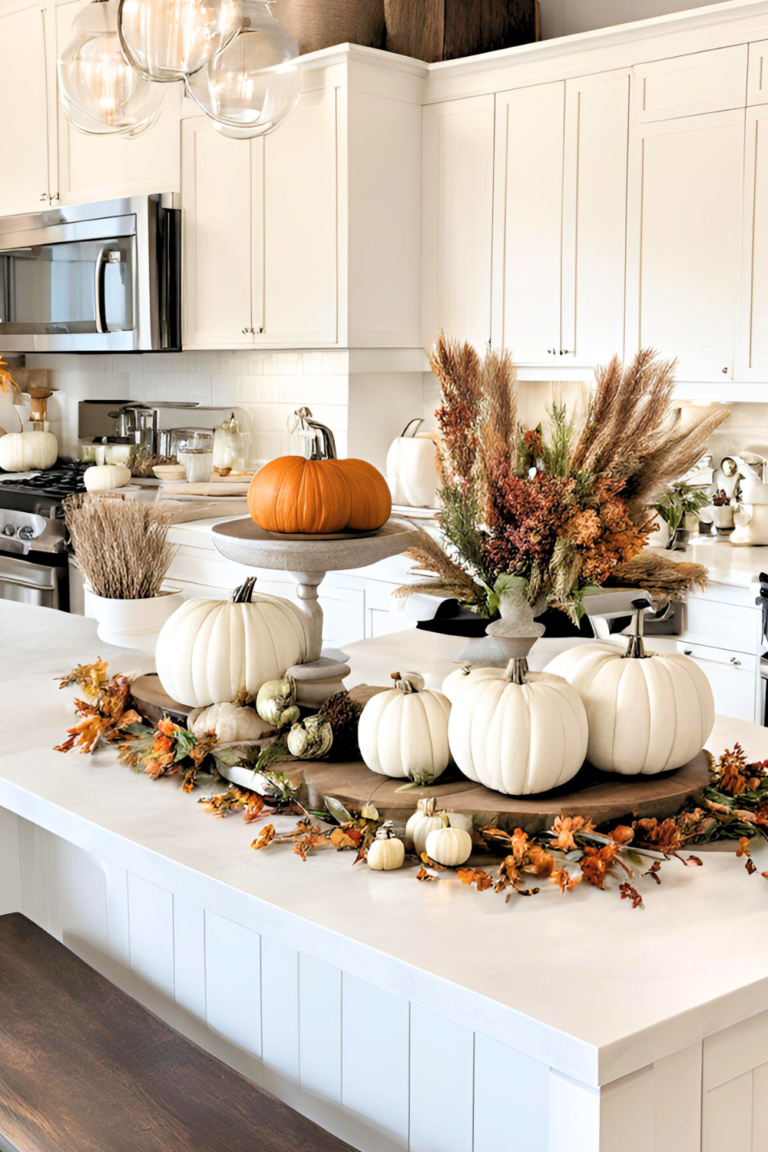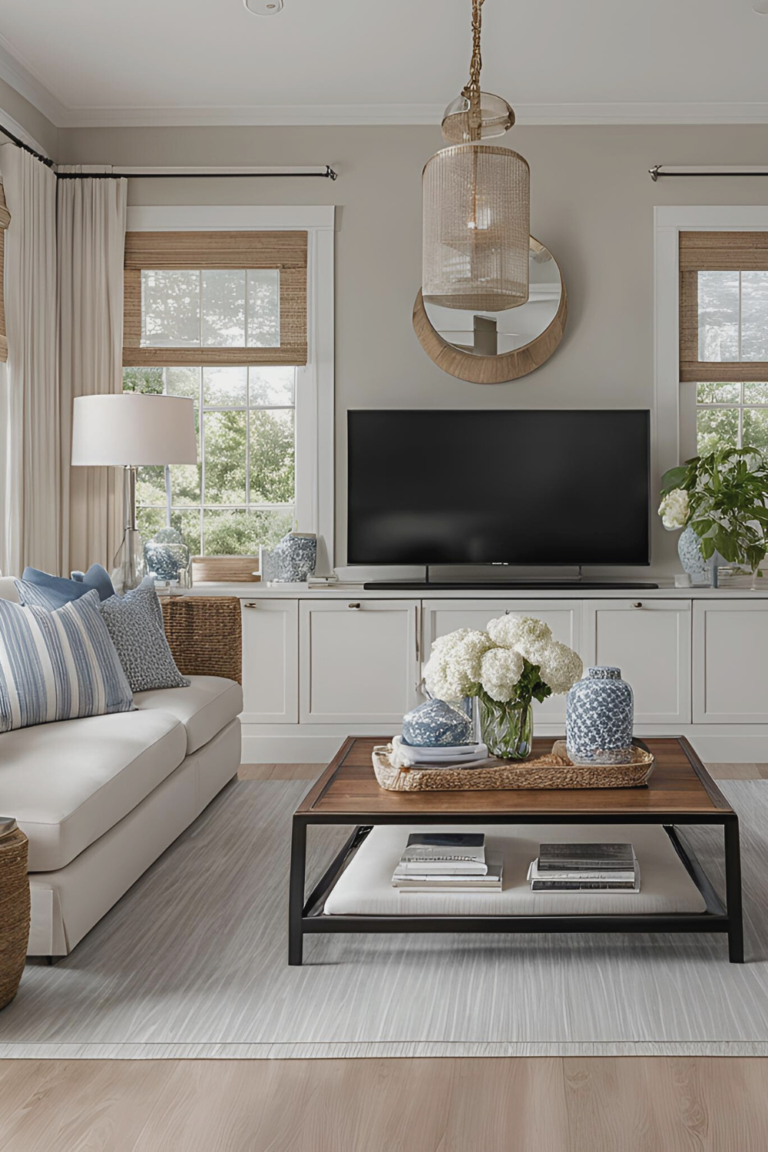Apartment Decor – The Best Ideas For Limited Space
This is the top guide for apartment decor. Make your new small space feel large and a great place to live!
This post may contain affiliate links, which means I’ll receive a commission if you purchase through my link, at no extra cost to you. Please read full disclosure here.
As an Amazon Affiliate I earn from qualifying purchases.

Apartment Decor – The Best Ideas For Limited Space
This is the top guide for apartment decor. Make your new small space feel large and a great place to live!
If you’re concerned because you are currently looking for an apartment and realize all you can afford is a small apartment or even a studio apartment — don’t worry!
I will take you step-by-step through some incredible, space-saving, interior designer tips and tricks to make your new apartment feel…
- Bigger, with space-saving solutions
- More put-together, using simple design tricks
- Less easily cluttered, with easy organization solutions
- More like home, by making the room feel cozy… and like yours.
There are some very important principles of interior design that can make a room feel drastically different.
It’s important to understand the roles that …
- Color
- Wall Heights
- Natural Light
- Floor Plan Layouts
- Design Layouts
- Storage Space
… play in a space, particularly a small space.
Let’s begin!
Color – Color Schemes vs. Color Palette, Mood, Themes & More
Color plays an important role in a space, especially a small space because it can affect your mood.
Consider how bright colors like bright yellows and oranges make you feel versus softer, more neutral colors like a tan or grey or lighter hue of say blue or green.
Here are some simple terms to understand when working with color:
- Color Wheel – this is the spectrum of colors laid out in a wheel – typically divided into six quadrants – one for each color of the rainbow, (or sometimes twelve (ore more), two for each color – one being lighter and one being darker).
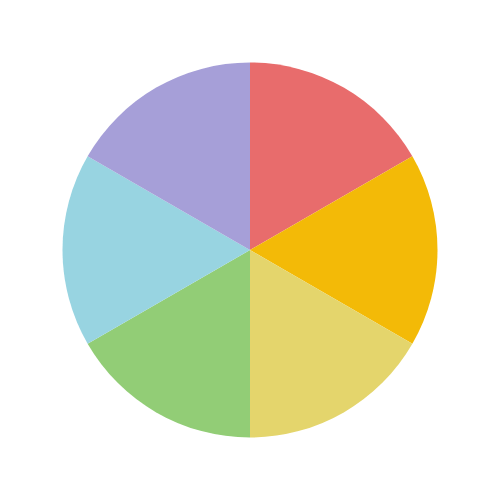
- Color Scheme vs. Color Palette – While used interchangeably, I recommend using a color scheme, as it is used to describe how color might affect for example, a room to create a cohesive or harmonious “look”, while a color palette is typically used to describe a set of colors used in graphic design.
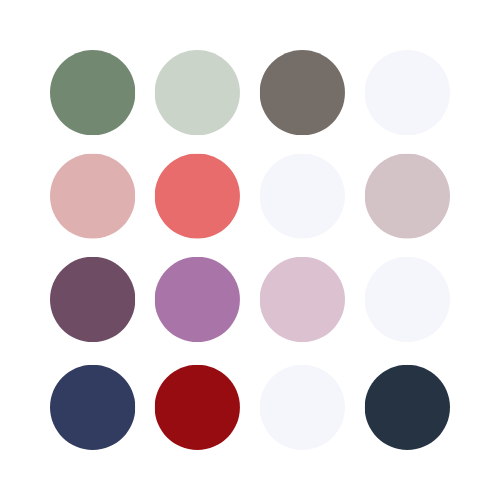
- Hues– Hues are the main or dominant colors we can see and identify to describe something’s color. This would be your basic set of colors – red, orange, yellow, etc.
- For example, to describe a painting of the ocean, one might describe it as having a blue hue.
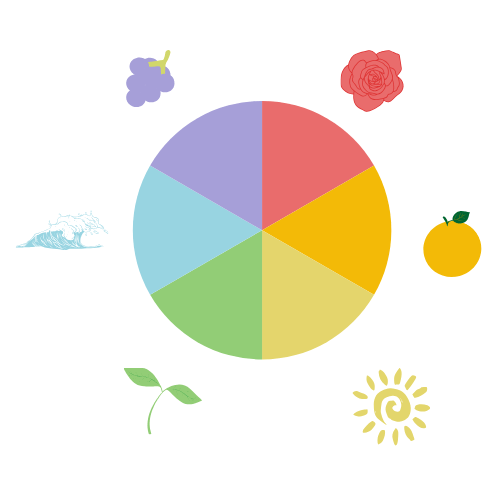
- Tints & Shades – Tints and shades help us create darker or lighter versions of a color.
- Tint is a mixture of white with a dominant color to create a lighter version of the dominant color.
- For example, green (the dominant color) mixed with white can create a sage-green, a lighter tint of green.
- Shade is a mixture of black with a dominant color to create a darker version of the dominant color.
- For example, blue (the dominant color) mixed with black can create navy blue, a darker shade of blue.
- Tint is a mixture of white with a dominant color to create a lighter version of the dominant color.
The 60-30-10 Rule
Are you tired of feeling overwhelmed in your space? Perhaps you are using too many overpowering, non-cohesive colors and shades!
To make your space more harmonious, consider the 60-30-10 rule.
The 60-30-10 rule is a principle of design often used to create a color scheme that matches and is not overwhelming to the eye.
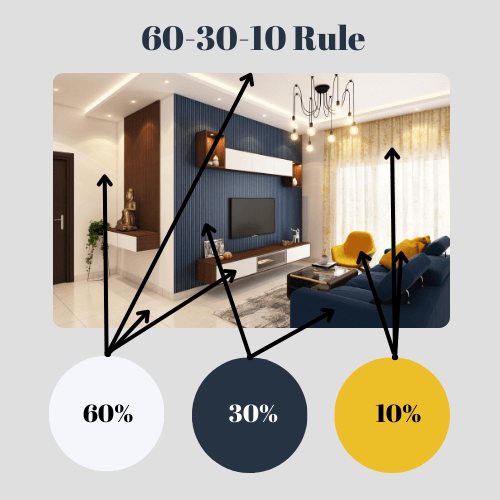
Essentially, it’s a breakdown of percentages of three colors – one dominant, one complimentary, and one accent to use in a space.
- 60% – Primary Color
- 30% – Secondary Color
- 10% – Accent Color
They can also be shades or tints of a color.
The great news is you can use this principle in your space — and it’s easy to do!
60-30-10
The great news is you can use this principle in your space — and it’s easy to do!
Simply choose 3 colors, 1 as your primary, 1 as your secondary, and 1 as your accent color.
All you have to do is decide on three colors …
- one that will be the primary in your space
- one that will be the secondary
- one that will be the accent
Don’t know what colors to choose? Concerned they won’t look good together?
You might be in luck — unless everything in your apartment is one singular color, such as white walls and white trim and white cabinets and doors, you might already have a color scheme you can work with!
For example, in my own apartment…
- the walls are painted a warm, neutral, soft, greyish brown (the debate is still ongoing haha) — also the counter is grey
- the baseboards, kitchen cabinets, doors, and trim are painted white
- we opted for adding green as our accent to the space since we enjoy greenery and plants, and it was easy to incorporate.
Therefore, we used this color scheme for our home!
- Primary – Brown
- Secondary – White
- Accent – Green
That right there is a great color palette to work with, and it is a great neutral set of colors we can already build off!
Therefore, when choosing things like furniture like our couch we opt for browns, for general other items such as a vase, we opt for whites, and for our accent color, we simply add a lot of plants and greenery.
Color & Mood
All the colors have a mood or set of feelings they are associated with. Therefore, it’s important to consider what mood you would like to feel in a space and how the color might affect it.
Here’s an easy breakdown of colors and their associated moods:

Warm Colors
Colors & Moods
Red: Excitement, Energy, Passion, Anger
Orange: Warmth, Creativity, Joy, Friendship
Yellow: Happiness, Warmth, Joy, Energy

Cool Colors
Colors & Moods
Green: Growth, Harmony, Nature, Peace
Blue: Calm, Trust, Dependability, Purpose
Purple: Creativity, Vision, Imagination, Spirituality
Themes
When creating a cohesive look you can consider using a theme to help design your space to give your space a certain feel or look.
A theme is a pre-established template you can use to create a space that gives off a particular feeling or look.
A theme can be based on anything…
Color – a room can be based on a favorite color such as pink or green

Artwork – perhaps you have a favorite artist you enjoy and want to incorporate his/her works
Patterns – perhaps you enjoy animal prints and want to incorporate those in a space
Environments – some examples are boho for dessert or nautical for the sea/seashore

Location – maybe you have a favorite vacation destination and incorporate natural elements and artwork from your favorite locations
Activities – maybe you enjoy exercise such as hiking or biking and incorporate that around your house

Interests – maybe you enjoy a specific movie or celebrity and want to incorporate that into your designs
Using a template can be a great way to help you style your small apartment and determine what kind of decor to put in your space!
Social Media Trends
A warning about following the latest trend on social media. While social media can be a great option for coming up with cool ideas for themes or apartment decor ideas, it is important to recognize that your style and interests can change, and it can be expensive to replace items if you decide you don’t like them anymore.
For example, open shelves are a very popular thing these days to create a minimalistic look in a home.
When done right, they can look very aesthetically pleasing and make it easier to find items.
However, they can become a hassle to clean, and something we don’t have items that necessarily “look” very nice, but we utilize in life, and having those on the shelves can make it look less put together.
No shade towards anyone who enjoys them, sometimes they are very practical and helpful, they can just make a space feel overwhelming and might get dusty or dirty.
Another example is barn doors on items for a more rustic look. Recently, those have fallen out of style and some people reject them strongly… if all your items have barn doors and you suddenly don’t enjoy them it might result in an expensive “fix”.
Wall Height & Natural Light
When searching for a new apartment it is important to understand the role that wall height or high ceilings play in making a room feel bigger.
While this isn’t always something we can control (or afford), if you have the option to do so, I would consider it strongly, as it can make your space feel so much bigger.
For example, at my very first apartment, we have almost 1,000 square feet (I believe it was 998 or something like that) and at our new apartment, we have about 730 square feet. Our space currently is significantly smaller, yet it feels significantly bigger! I have heard this experience is similar to other friends of mine.
It might sound hard to believe, but wall height can make a space feel more or less …
- open
- cluttered
- brighter/darker
- spacious
- energizing
- luxurious
High ceilings are not just a luxury, they can also have great utility if utilized correctly.
For example, utilizing vertical space by incorporating shelving for space saving or using large mirrors to make a space look bigger.
While it isn’t everything, it’s important to consider how ceiling height/wall height can make you feel.
Natural light refers to how much sunlight can get into a space.
Wall height and natural light go hand in hand, because simply, with walls and therefore higher ceilings, more light can enter a space.
Large windows that let in natural light are definitely something to consider when looking for a new apartment.
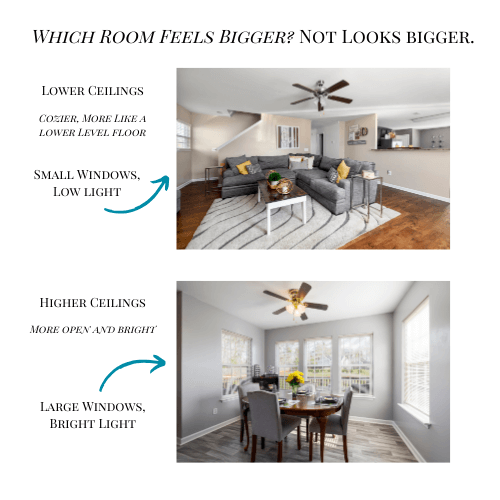
Floor Plans & Design Layouts
What are they? Floor plans refer to the layout of a space whether that be an apartment, home, building, etc.
Floor plans include everything that is in a space — both movable and immovable — appliances, furniture, fixings, decor, and more.
When moving into a small apartment it is especially important to understand…
How you arrange your furniture in a space can make a huge impact.
Arranging furniture can affect:
- Functionality
- Utility
- Comfort
- Appearance
… and much, much more.
Here are some great tips to arrange spaces to feel more open, spacious, cozy, and more …
Sectioning
This is a great method for dividing up spaces, especially large, open spaces.
Sectioning can be done in many different ways. It can be done using walls, furniture, screens, items, and more!
It’s important to note that you don’t need to have a physical barrier to section a space! Simply creating a space for an obvious utility in a room can section off an area!

Here is an example… Adding a chair, lamp, and bookcase in a corner of a room can create a cozy reading area!
Here is another example … Using sofas, either in an L shape, a standard shape, or multiple shapes can section off a sitting area!
Rug Dimensions & Designs
While a rug doesn’t seem like it can affect the look or feel of a space, rug dimensions play a very important role in a space.
Here are some helpful tips to follow with rugs and rug dimensions:
Rug Colors
Opting for a bold color can be fun and a great way to accent your space, just remember that using more neutral colors or even just light colors can prevent you from boxing yourself in later on with too much color and throwing off your look.
Also if you decide to change your style in the future it can save you some money in your new space.
Rug Textures
Different textures can be anything you like and can be a great way to create “movement” in your space, especially with bolder textures.
Just make sure to note that some textures like faux or real fur can start to look more compressed and worn over time which can be expensive to remedy.
Rug Dimensions
There is no “perfect” size for a rug.
For area rugs generally, it is a good idea that they don’t cover one corner or cover the entire floor, but rather help you section off certain areas such as a sitting area with a large area rug or multiple spaces with large area rugs.
It is recommended that for larger spaces having larger rugs can fill the space and make it feel bigger, and for sectioning off smaller spaces such as a reading nook or front door having a small rug is a perfect solution for filling a space.
Rug Shape
There is no “perfect” shape for an area rug. Typically people opt for circular or square/rectangular, but any shape works.
For clean lines and sharp edges rectangular or square shapes are an excellent choice for a more formal, specific area.
For a more unique look, or to match rounded items such as a circular coffee table is a great way to add to a stylish apartment.
Rug Layering
While not a necessity, rug layering can create more movement by showcasing textures or patterns for a unique floor space.
Rules Of Thumb
Rug Layout
Here are a few general design rules for rugs that many designers utilize when designing a space:
Couches
A general rule of thumb is that a rug can fit underneath the front legs of your couch area at least, and if there are chairs on the opposite side their front legs are under it as well.
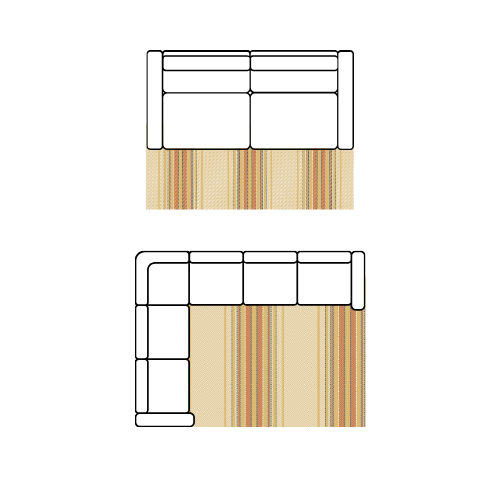
Beds
A good rule to follow with beds is that a rug goes under the bed with at least 8 inches of open space and that the bed frame, nightstands/end tables/side tables aren’t under the rug and have at least 8″ of distance from the rug.
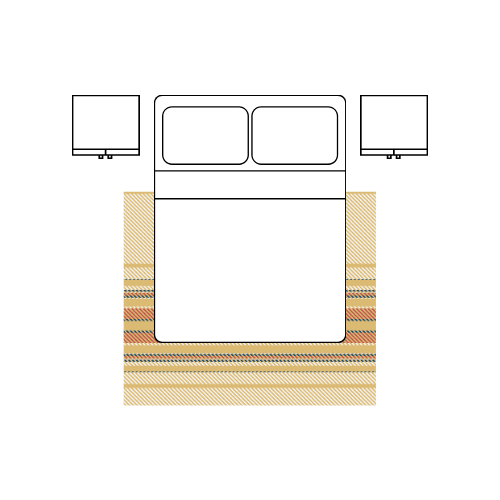
Dining Areas
It is recommended that for dining tables, the chairs and table are all under the rug with about 8″ of extra rug space around the table.
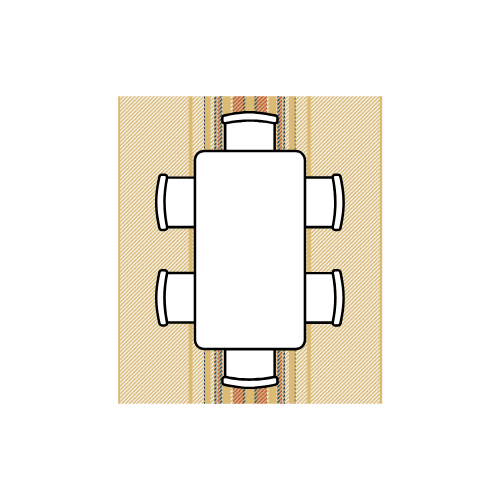
Apartment Decor For Every Room
Whether you’re in a college apartment or just trying to determine where to put your home office in your apartment there are some great options for decor in every room. Everything from a focal point such as a couch all the way to a small plant can make an impact on the feel of your space.
Apartment Living Room
A small living room can feel like a hindrance in terms of expressing your personal style, but it doesn’t have to be! There are tons of decor options that can make an apartment living room look and feel amazing.
Throw Pillow
While they don’t seem like much, throw pillows actually have a lot more utility than people first assume. Not only are they great for making your couch or chairs a comfortable place to sit, but they also are awesome for adding an accent color to your room or adding some texture or patterns to enhance the look of your apartment.
|
3.5
|
3.5
|
3.5
|
|
$25.99
|
|
$25.99
|
Wall Art
Picture frames, gallery walls, and general wall art are fantastic ways to show off your interests and style or even just to showcase your family, best friend, etc. Here are some great options!
|
3.5
|
3.5
|
3.5
|
|
|
$9.99
|
$12.59
|
General Decor
Decor is a great way to show off your personal interests.
The good news is that you don’t need to spend a bunch of money to have some decor! You can use what you already have and build up your collections over the years.
Things like a record collection, musical instruments, games, books, etc. are great ways to showcase your style while also having utility.
Here are some cool ideas if you’re looking to add more decor with utility!
|
3.5
|
3.5
|
3.5
|
|
|
$27.99
|
|
Dining Room
Dining room decor can be a fun way to make your home feel more homey.
It can include things like table decor, wall decor, cabinet/bar/storage top decor, and more!
Here are some cool ideas for dining room decor!
|
3.5
|
3.5
|
3.5
|
|
N/A
|
|
N/A
|
Apartment Kitchen
Apartment complexes such as a San Francisco or New York City apartment probably should focus more on utility since there likely isn’t too much space for things other than cooking-based items.
However, wall decor, small kitchen counter decor, and even your kitchen cookware can be a great way to show your style and interests!
Here are some fun apartment kitchen decor ideas!
Apartment Bathroom
Apartment bathrooms are often very small and sometimes not super nice when you’re first starting out.
Therefore, adding some items with utility that are fun and personalized can make living for apartment dwellers a lot more enjoyable!
Items like a shower curtain, bath mat, wall decor, etc. are fun to personalize!
Here are some great apartment bathroom decor ideas!
Apartment Bedroom
Your apartment bedroom is also the perfect place to make your apartment feel unique, homey, cozy, and personal.
Here are some fun and cozy apartment bedroom decor ideas!
Minimalistic and beautiful!
Rental Space Decor Solutions
Here are some awesome ideas for rental space decor options to create a unique apartment that’s still your own without losing your deposit.
Removable Wallpaper
If you really hate the color of your walls and don’t want to lose your deposit you can opt for stick wallpaper/removable wallpapers or painting an accent wall.
If you still really hate them and need to paint them opt for neutral walls so that way if you need to repaint them later it won’t be as tedious and expensive.
Multipurpose Furniture
If you’re stuck with a tiny apartment and a lack of cash, multipurpose furniture or hidden furniture such as Murphy beds or a sofa bed is a great way to go.
Hidden Storage Space
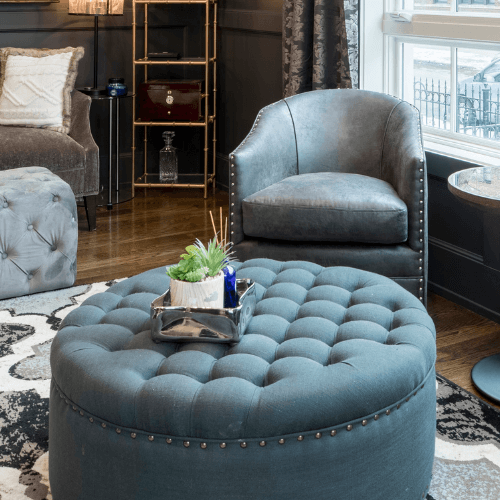
|
3.5
|
3.5
|
3.5
|
|
$69.99
|
N/A
|
$97.99
|
A great way to hide your clutter and still showcase your personal style is storage solutions.
Furniture such as a console table, underbed storage, or stylish cabinetry can be great options for storing your items.
Artificial Plants
Live plants are expensive and require a lot of care and attention.
If you’re moving around a lot, don’t get much light, or just generally don’t enjoy plant care, there are tons of artificial flowers on the market that look realistic but don’t cost a ton of money.
Decor is the best way to bring life and movement into your space, and artificial plants needing limited care are a great added bonus.
Summary
I hope this article all about apartment decor was helpful to you and showed you that small changes can make a smaller space look and feel like a larger space!










